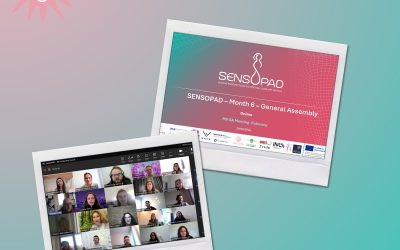
SENSOPAD Project
The SENSOPAD project is advancing the field of endometriosis diagnostics by developing two biosensors for early, non-invasive detection:
-
A wearable layer-pad designed for convenient at-home use.
-
A clinical-grade sensor aimed at delivering precise, real-world diagnostics.
Both devices function as biological processors, detecting early, subtle signs of endometriosis through menstrual effluent – an underexplored and rich source of biomarkers.


What is Endometriosis
Endometriosis is a chronic and often painful condition in which tissue similar to the lining of the uterus grows outside the womb, typically affecting the ovaries, fallopian tubes, and pelvic tissues.
Endometriosis is a chronic and often painful condition in which tissue similar to the lining of the uterus grows outside the womb, typically affecting the ovaries, fallopian tubes, and pelvic tissues.
This ectopic tissue behaves like endometrial tissue, thickening, breaking down, and bleeding with each menstrual cycle, but with no way to exit the body. As a result, it can lead to inflammation, scarring, adhesions, and, in severe cases, infertility
It affects 1 in 10 women and individuals assigned female at birth, impacting over 190 million people worldwide. Despite its prevalence, diagnosing endometriosis remains a significant challenge.
The average diagnostic timeline is 7.5 years due to the lack of reliable, non-invasive screening tools, while most diagnoses occur only after symptoms have worsened, often requiring invasive surgical procedures
Why change is needed and the potential of menstrual fluid for early detection
Diagnosing endometriosis remains a significant challenge, often resulting in years of uncertainty reduced quality of life for those affected. With an average diagnostic delay of 7.5 years, individuals often undergo extensive testing and invasive procedures before receiving a confirmed diagnosis. Current methods, such as laparoscopy, are surgical, costly, and not always definitive, making early detection difficult.
Menstrual fluid presents a promising, non-invasive alternative for identifying endometriosis-related biomarkers. Despite being an easily accessible biological sample, it remains underutilised in clinical research. By analysing menstrual fluid, SENSOPAD is working to develop innovative tools that:
Detect biomarkers associated with endometriosis in menstrual fluid.
Complement existing diagnostic methods, offering a supportive, more agile and less invasive alternative.
Provide earlier insights into symptoms, enabling proactive healthcare decisions and helping individuals track symptoms more effectively.
Reduce reliance on surgical procedures and costly, time-consuming lab tests.
Improve healthcare accessibility for underserved communities, where specialized diagnostic options are limited.
Our mission
SENSOPAD is a research project focused on researching and developing sensor-based tools and software applications that contribute to a more efficient and patient-centric process for the diagnosis of endometriosis and the monitoring of its symptoms.

Research and develop sensor-based, wearable tools
that detect ED biomarkers in menses/ menstrual fluid.

Explore non-invasive methods
to assist in earlier detection and symptom tracking.

Investigate ways
to enhance endometriosis understanding and diagnostic accuracy by developing software to track and monitor symptoms.

Contribute to
reducing diagnostic delays and healthcare costs through innovative R&D.

Our partners role in SENSOPAD
National Technical University of Athens
NTUA, as the coordinator of the SENSOPAD project, leads the development in several critical areas:
- Next-gen biosensing leadership: develop and test antibody-based biosensors for key ED-related pro- and anti-inflammatory markers, as well as the in silico design and in vitro validation of dCas9/sgRNA systems targeting ED-linked SNPs.
- Data modeling: Building models that combine biological and clinical data to support earlier diagnosis and better prediction of disease progression.
- Material innovation: Designing and producing high-absorption, biocompatible materials for the sensor layer pad.
- Electrospinning process modeling: Optimizing the production of sensor membranes with better structure and function through advanced simulation techniques.
- Ethics by design: Ensuring the project’s research integrity and ethical alignment.
Graphenea
Graphenea will contribute to the fabrication of the graphene devices that will be used for the early diagnosis of endometriosis and enable the commercialisation of graphene in point of care applications.
Gals Bio
Soon, endometriosis – a condition currently affecting about 20% of menstruating women – will become a simple and accessible problem to diagnose, thanks in part to the Tulipon device. Tulipon enables the Sensopad cohort to easily collect menstrual effluents at home and analyze them for biomarkers efficiently and effectively. Tulipon is an innovative fem-wearable platform that empowers women globally to be diagnosed and treated for various health issues from the comfort of their homes, with the accuracy of a lab.
University of Oxford
The Nuffield Department of Women’s and Reproductive Health at the University of Oxford is proud lead the assessment of SENSOPAD devices in real-life environments and contribute to the integrating cutting-edge technology into the care of endometriosis patients. By evaluating the devices in real-world clinical settings and taking into consideration societal viewpoints, we aim to accelerate the early detection of endometriosis and improve outcomes for women affected by this condition
Our consortium
News and Events
Diagnosing endometriosis currently takes an average of 7.5 years. During this time, millions of...
Our consortium met online on Monday, February 24, 2025, for SENSOPAD’s first General Assembly,...
















